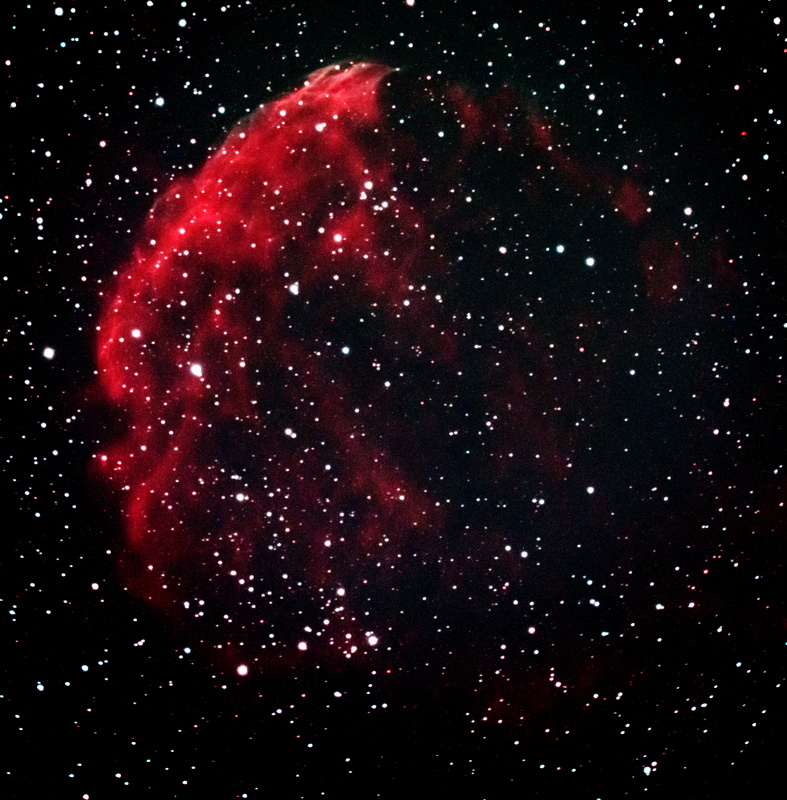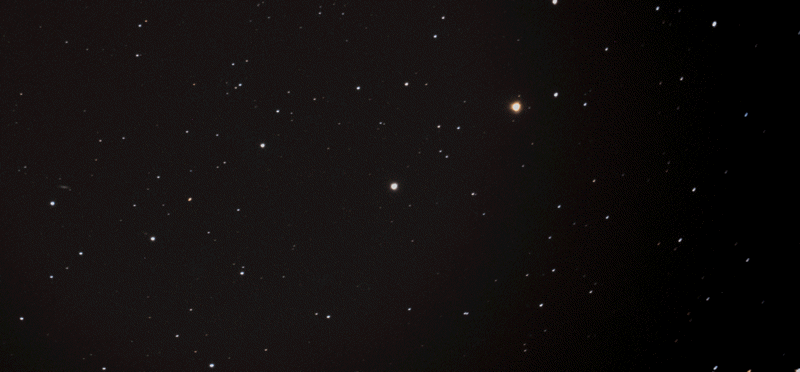ETX-105/LXD55 observing,
ISS, IC443 Nebula, Asteroid 9 Metis
Posted: 8 April 2021
Sunday, 4 April 2021, was clear until late afternoon. Late Sunday afternoon and well into the night I was at Oracle State Park, our local IDA "International Dark Sky Park", to do more preparations for the Park's upcoming Virtual Star Party to be held in conjunction with International Dark Sky Week, 5-12 April 2021. Clouds threatened our observations all night long, but it was a surprisingly successful night. For the virtual event I will be monitoring the Oracle State Park Facebook page (which should be available to non-FB viewers).


The Virtual Star Party will premiere on Facebook and YouTube on the Arizona State Parks & Trails channel on Saturday, 10 April, at 7pm MST (0200 GMT 11 April).
Monday, 5 April, was cloudy and windy (of course). So was Tuesday, 6 April. Wednesday, 7 April, was clear.
|
Open: Wednesday, 7 April 2021, 1809 MST Temperature: 84°F |
Session: 1620 Conditions: Clear |
Equipment:
12" f/8 LX600 w/StarLock
2" 24mm UWA eyepiece
ETX-105/LXD55
1.25" 26mm eyepiece
1.25" Wide Field Adapter
Camera:
D850 DSLR
I set up my Meade ETX-105 mounted on a Meade LXD55 GEM on the observatory patio.

1827 MST: I began relaxing on the observatory patio bench while waiting for the sky to get darker.

1849 MST: sunset.
1900 MST: back inside the observatory.
1901 MST: LX600 ON, StarLock OFF, High Precision OFF.
Updated the TLE for this night's pass of the International Space Station (ISS). The station would pass low in the sky through Orion. Mounted the D850 DSLR at prime focus of the 12" LX600, focused on Sirius, locked the 12" primary mirror, and tweaked the alignment of both finderscopes.
1915 MST: it was calm now and everything was in readiness for the ISS pass, which would begin at 1934 MST.
During the ISS pass I did a prime focus video recording, 1080p, 60fps, 1/2000sec, ISO 1600. This is one frame cropped from the video.

1952 MST: LXD55 ON.
Using the ETX-105 I viewed M45 (Pleiades), 36X. I then viewed M42 (Great Orion Nebula), 36X and 57X. The view of M42 and the Trapezium star cluster was very nice. I had planned to do more observing with the ETX-105, but it was now time to begin DSO imaging with the 12" telescope.
2012 MST: LXD55 OFF. The Zodiacal Light was nicely visible in the western sky.
Mounted the D850 DSLR at prime focus + focal reducer + UHC filter, focused on the star Betelgeuse, and locked the primary mirror. Slewed to IC443 (nebula).
2025 MST: StarLock ON.
After doing some framing test images, I took 6 StarLock autoguided, 5 minutes, ISO 12800, White Balance 5560K, images of IC443. This is a stack (cropped) of those images using Affinity Photo.

Removed the UHC filter, focused on the star Arcturus, locked the mirror, and SYNCed on Arcturus.
2121 MST: Wi-Fi adapter ON.
Used SkySafari 6 Pro on the iPhone 11 Pro Max to GOTO Asteroid 9 Metis, Mag. +9.6.
2123 MST: Wi-Fi OFF.
2125 MST: took this (cropped) image of Asteroid 9 Metis, StarLock autoguided, 5 minutes, ISO 6400, WB 5560K. At the left edge is the small galaxy PGC45080, Mag. +16.2.

2225 MST: took another image of Asteroid Metis. This image shows the motion over one hour.

2237 MST: StarLock OFF.
Observed Asteroid 9 Metis, 102X.
Then observed M104 (Sombrero Galaxy), 102X.
2240 MST: LX600 OFF.
I had planned to take a Sky Quality reading but thin clouds were at the zenith.
|
Close: Wednesday, 7 April 2021, 2257 MST Temperature: 61°F |
Session Length: 4h 48m Conditions: Mostly clear |
Comments are welcome using Email. Twitter users can use the button below to tweet this report to their followers. Thanks.
Cassiopeia Observatory Home Page
Copyright ©2021 Michael L. Weasner / mweasner@me.com
URL = http://www.weasner.com/co/Reports/2021/04/08/index.html
